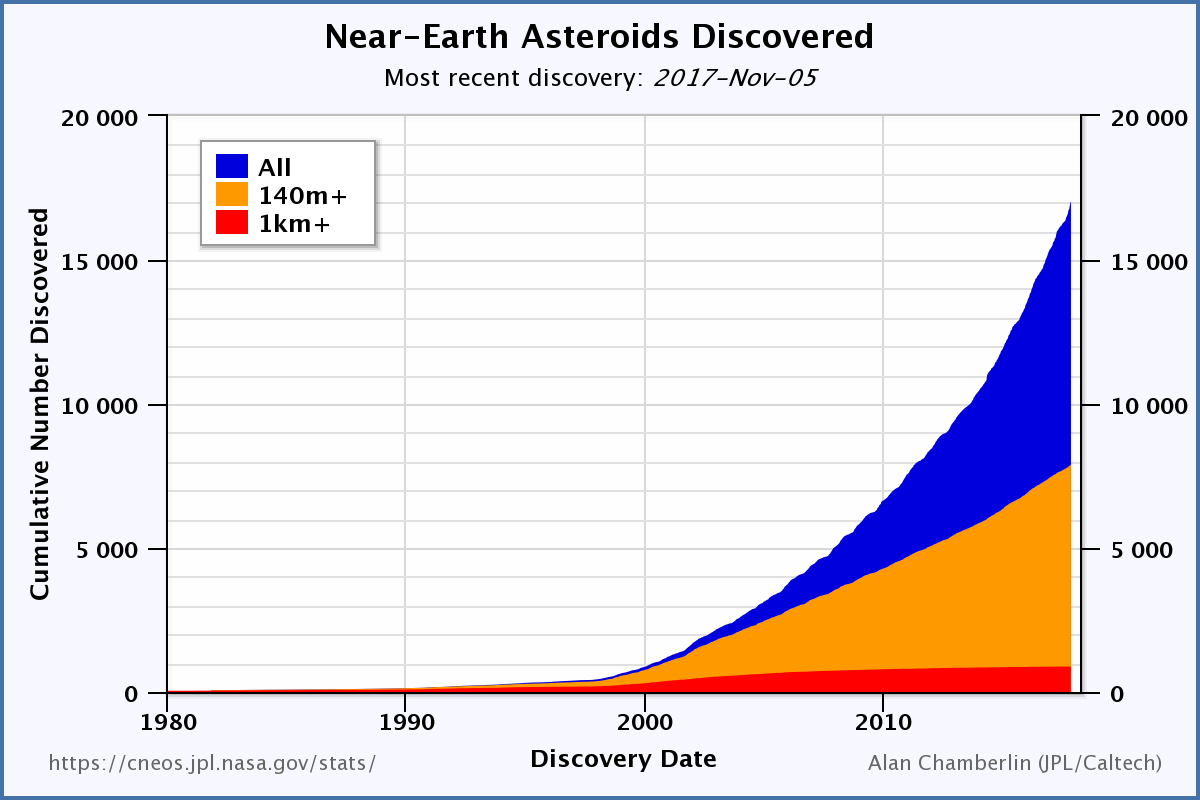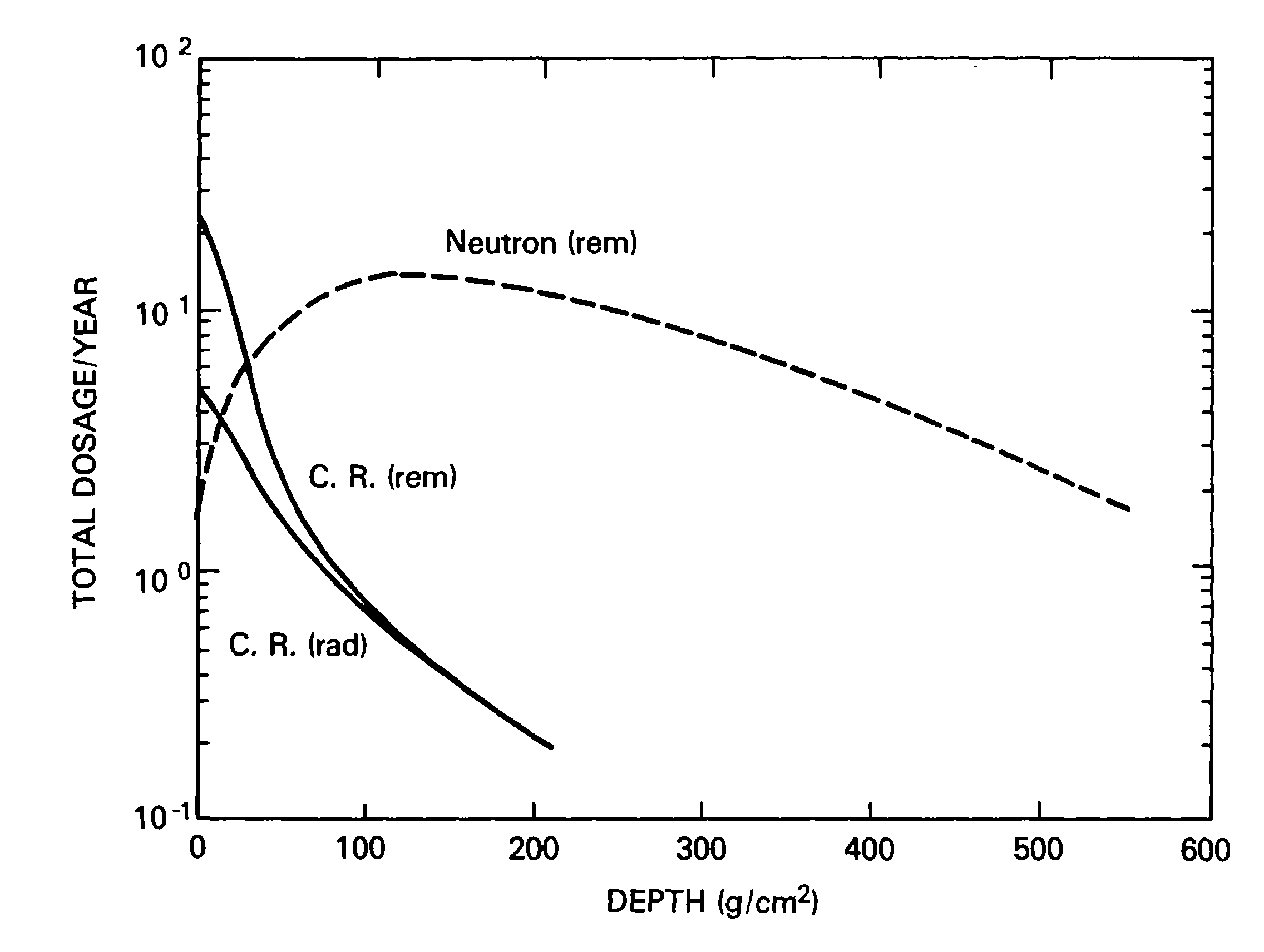|
Size: 4312
Comment:
|
Size: 6542
Comment:
|
| Deletions are marked like this. | Additions are marked like this. |
| Line 3: | Line 3: |
The 1-2-3-Mars plan may delay the direct human exploration of the Martian surface by centuries. In that time, billions of people may migrate to the asteroids, the largest "land rush" in history. .'''1''' A massive telescopic and robotic mapping of the asteroid belt, Phobos and Deimos. We should place retroreflectors and transponders on every 10 meter and larger object, and map their locations to nanometer accuracy. These will help us produce superaccurate gravitational maps of the inner solar system, so we can predict (and deflect) Earth impactors, and design centimeter-per-gigameter-accurate (1e-11 error) interplanetary and inter-asteroidal missions. . Distance measurement errors to the retroreflectors on the LAGEOS satellites are already smaller than this, measured from the ground through a turbulent atmosphere. LIGO measures distances to 1e-22 accuracy. We can learn to do this. .'''2''' Manned expeditions to the asteroids. These will require [[ http://launchloop.com/MissionToAnAsteroid | much less time, expense, and risk ]] than a trip to Mars. We will core sample and measure large potential impactors like 99942 Apophis, and experiment with asteroid deflection techniques. .'''3''' Robotic missions to the Martian surface, controlled from manned bases on Mars and Phobos. The goal is to deploy enough robots to '''completely''' map '''all''' of the Martian surface to microbiological detail, and locate the best sites for manned bases that are least likely to contaminate the rest of the planet. We can also experiment with contamination control and mitigation using nonbiologically active tagged molecules and structures. .'''Mars''' Only when we can be certain that we will not irreparably contaminate this unique resource, we can put boots on the ground. This is after decades of "virtual boots" on the ground; with relay satellites and robots, we should be able to construct a "better than real" experience of shirtsleeve martian visits using predictive adaptive telepresence. The only reason to risk both people and Mars itself is to validate those sophisticated models. Risking death in a space suit balloon may prove very unpleasant. MoreLater ---- |
Asteroids or Mars?
Orycon 39, 2017
The 1-2-3-Mars plan may delay the direct human exploration of the Martian surface by centuries. In that time, billions of people may migrate to the asteroids, the largest "land rush" in history.
1 A massive telescopic and robotic mapping of the asteroid belt, Phobos and Deimos. We should place retroreflectors and transponders on every 10 meter and larger object, and map their locations to nanometer accuracy. These will help us produce superaccurate gravitational maps of the inner solar system, so we can predict (and deflect) Earth impactors, and design centimeter-per-gigameter-accurate (1e-11 error) interplanetary and inter-asteroidal missions.
- Distance measurement errors to the retroreflectors on the LAGEOS satellites are already smaller than this, measured from the ground through a turbulent atmosphere. LIGO measures distances to 1e-22 accuracy. We can learn to do this.
2 Manned expeditions to the asteroids. These will require much less time, expense, and risk than a trip to Mars. We will core sample and measure large potential impactors like 99942 Apophis, and experiment with asteroid deflection techniques.
3 Robotic missions to the Martian surface, controlled from manned bases on Mars and Phobos. The goal is to deploy enough robots to completely map all of the Martian surface to microbiological detail, and locate the best sites for manned bases that are least likely to contaminate the rest of the planet. We can also experiment with contamination control and mitigation using nonbiologically active tagged molecules and structures.
Mars Only when we can be certain that we will not irreparably contaminate this unique resource, we can put boots on the ground. This is after decades of "virtual boots" on the ground; with relay satellites and robots, we should be able to construct a "better than real" experience of shirtsleeve martian visits using predictive adaptive telepresence. The only reason to risk both people and Mars itself is to validate those sophisticated models. Risking death in a space suit balloon may prove very unpleasant.
The European record with pathogens is not very good.
Mars was best for one thing - a second cradle of life. We get only one chance to do micropaleontology there before human-sourced biological contamination overwhelms whatever microbial fossils might remain from a past living era. We do not have the tools or the understanding to do that search now; hopefully, as we stake our claim to the solar system, we will develop the robots and the techniques to look there.
Jupiter's moon Europa is shrouded in ice, and may have a water ocean below, with sea-floor hydrothermal vents recapitulating the autocatalytic processes that led to life on Earth. Europa should also be left alone, for now. So what does that leave for humans?
The asteroids. Asteroids are smaller than planets, but much more numerous. The Center for Near Earth Object Studies at JPL coordinates the search for NEOs ( asteroids and comets ) that may someday impact Earth. Since some of these asteroids are currently far from Earth, with apoapses in the asteroids, the search is discovering many main belt asteroids as well. These are tiny moving dots of light in the sky, all we know about the small ones is their luminosity, and without knowing their albedo and shape, we can only estimate their size by comparing them to better observed objects. But adding up the estimated sizes and surface areas, we have already discovered more asteroid surface area than the surface area of our Moon. The rate of new discoveries is increasing, and the number of known objects has more than tripled in the last decade; in another decade, we may discover more surface area than Mars, or even the land area of the Earth itself.
 downloaded from CNEOS 2017/11/09 .
downloaded from CNEOS 2017/11/09 .
The asteroids may be the largest human settle-able surface in the solar system.
Settle-able? What about Mars?
Mars has enough gravity to kill us, but not enough to keep us alive. Martian gravity is 38% of Earth gravity, and will not hold onto a permanent atmosphere. Humans evolved for physical activity in 1 gee, standing and running and exercising (stand up and stretch right now!). Long periods in chairs or lying down cause cardiovascular damage, muscular and skeletal atrophy, changes in eyesight and cognition. Until we make major biomolecular changes to humans, sub-gee environments will slowly kill us. NASA doctors write books about this, and we pretend they aren't true - hence the current declining life expectancy in the US.
The Earth's atmosphere and strong magnetic field protects us from the lethal radiation of space; Mars has neither. Indeed, "just a little" radiation shielding turns high energy particles into sprays of neutrons, which require more than 4 meters of regolith to absorb.
 from Silberberg1985.pdf.
from Silberberg1985.pdf.
700 g/cm² is required to shield humans against solar flares; 7000 tonnes per square meter. That requires heavy girders on the Earth, and 38% as much structural material in Mars 0.38 gee gravity. On 22 km diameter Phobos, the gravity is 5.7e-4 gees, so the weight would be equivalent to "only" 4 tonnes per square meter, and on a 1 km diameter Phobos-density asteroid, 180 kg/m² equivalent. It is conceivable that a large round cavern can be shielded to terrestrial radiation levels and contain a sizeable spinning habitat offering 1 gee equivalent gravity to its occupants. That will be almost impossible on Luna or Mars. The surface area of a 1 km asteroid is more than 300 hectares, more if it is irregularly shaped. The escape velocity would be centimeters per second; travel between asteroids will involve long distances but low delta V. Most travel will be cargo, and telepresence at the speed of light.
---
A great exploration dwarfing the Asian/Polynesian settlement of the Pacific. The US used to celebrate Columbus Day, when Christopher Columbus "discovered" the Americas for Spain. The America
